Dear Dani, Grace and Jude,
Note: This page is advice for Grace, Jude and John. For any other reader, it’s information only. No therapeutic relationship is formed – read this.
Managing exercise is the biggest challenge type 1 diabetes has to offer.
It is impossible to create a guide that will work perfectly.
However, I can teach what’s happening in the body during exercise and provide a guide to create starting exercise plans.
The plans follow all the consensus guidelines – read more the For John -Deep Dive page.
However, you will have to apply trial and error with the plans. All the while remembering The Glucose Never Lies.
Let’s begin.
Do all types of exercise impact the the glucose level the same?
Certainly not.
Different types of exercise put there own stamp the glucose level. All three of these graphics tell the same story.
- Aerobic (endurance) exercise drops the glucose level
- Anaerobic (very intense) exercise increases the glucose level
- Mixed (team sports) exercise may increase or decrease the glucose level depending on the intensity
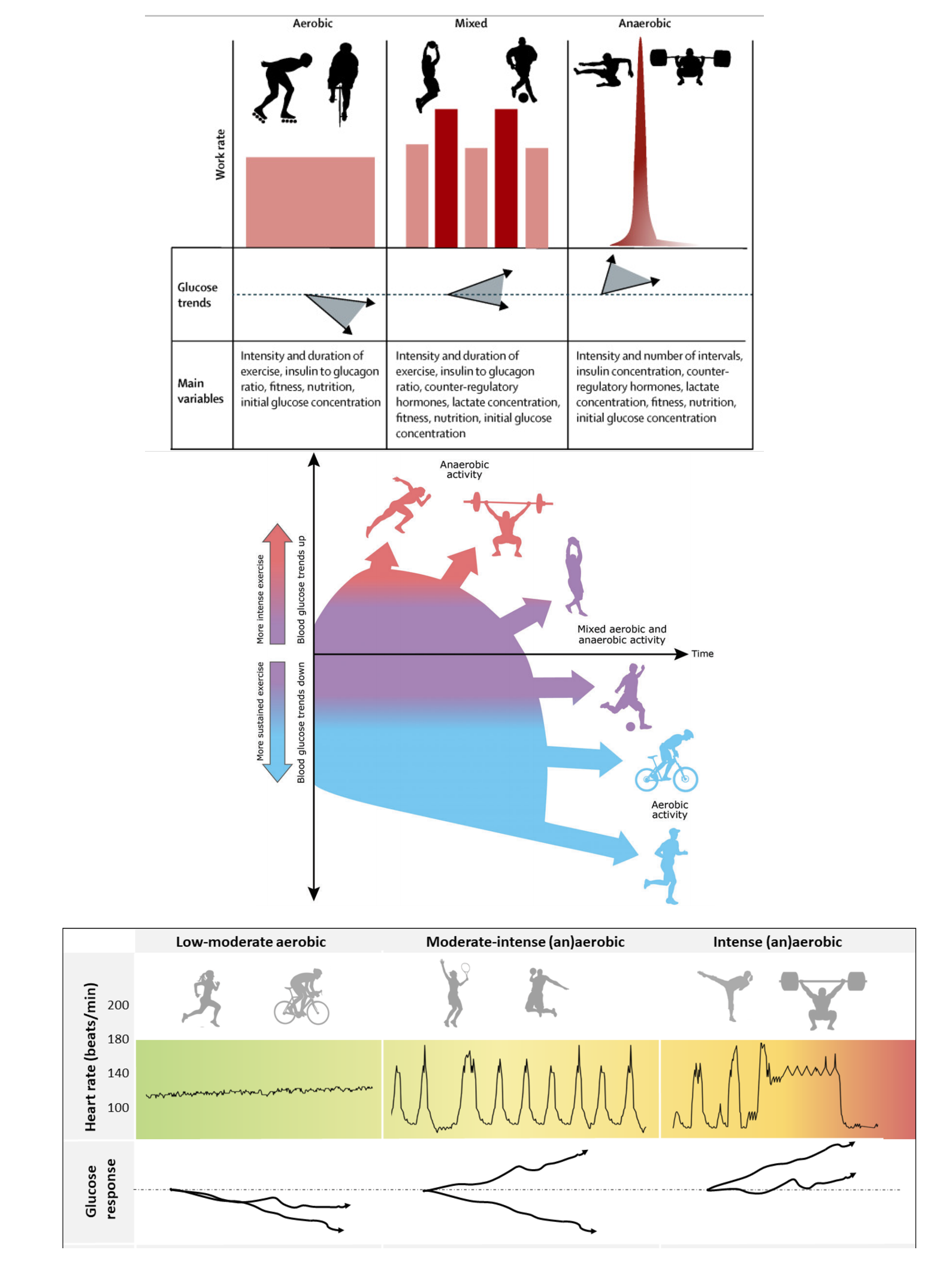
Why does aerobic exercise drop the glucose level?
The side door of the muscle cell opens remember?
I will teach you how reduce insulin and give extra carbs to prevent hypos in this guide.
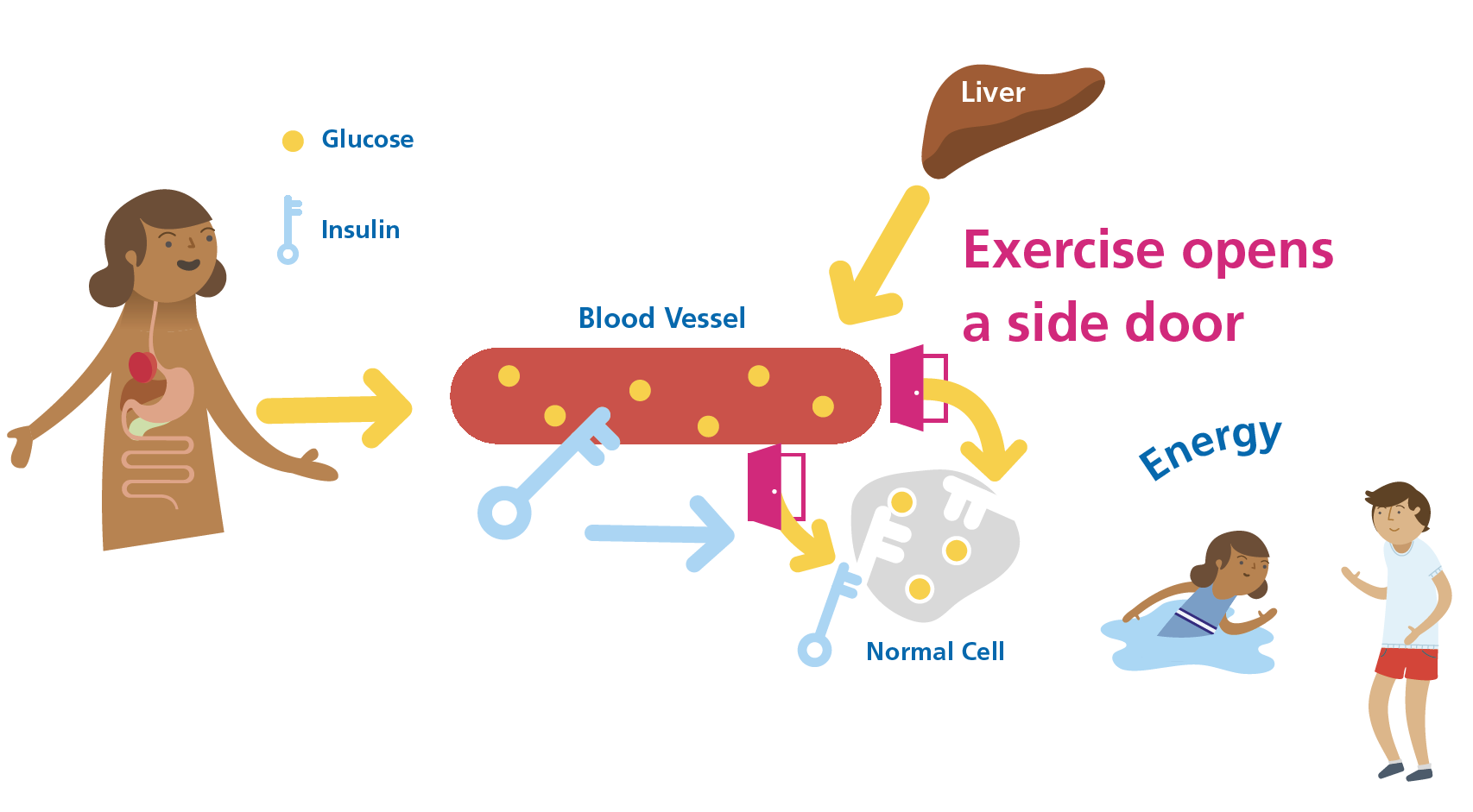
Why does anaerobic exercise increase the glucose level?
The stress hormones released during intense efforts increase liver glucose output.
The outpouring of glucose exceeds what can be taken up by the muscle cells, even with the side doors open.
I will teach you how to stop the spike with extra insulin in this guide.
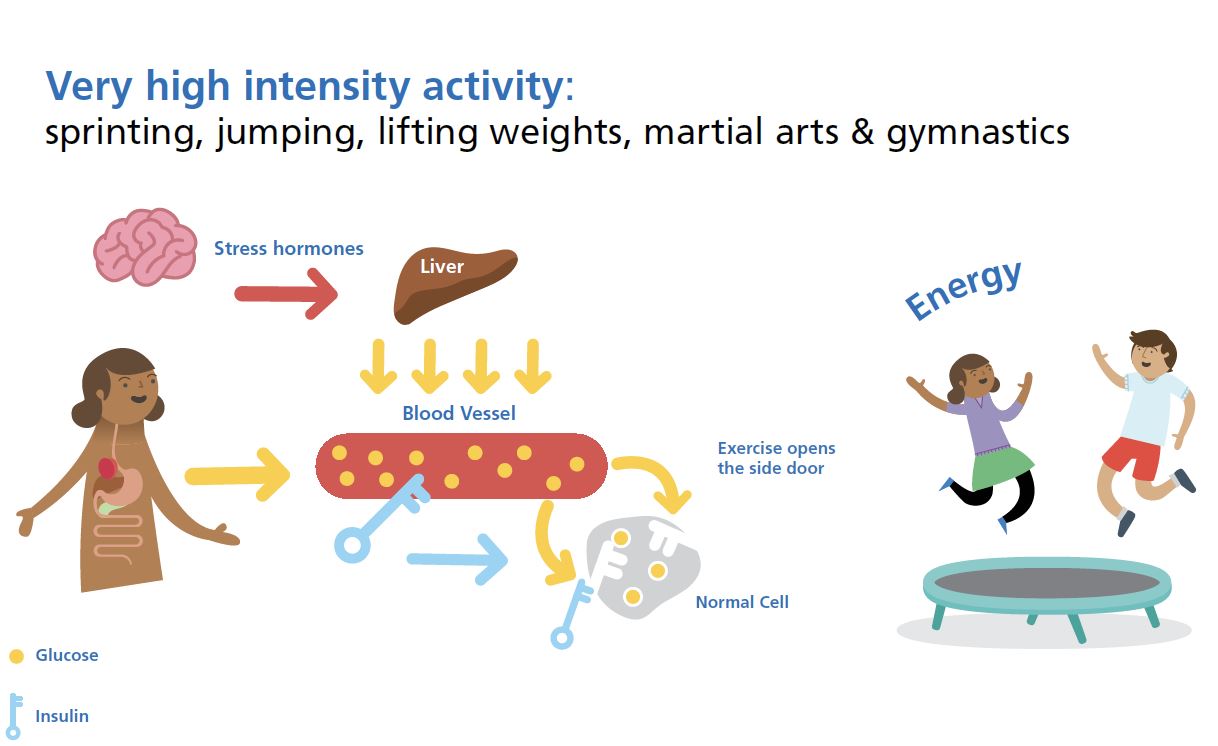
Why does mixed exercise sometimes increase and other times drop the glucose level?
It depends how intense the exercise is. The more intense the more likely the glucose will go higher.
I will teach you how to manage mixed exercise in this guide.
Does it matter if I have given bolus insulin before exercise?
You better believe it does.
When you combine a full bolus dose with exercise it makes insulin far too strong and last too long!
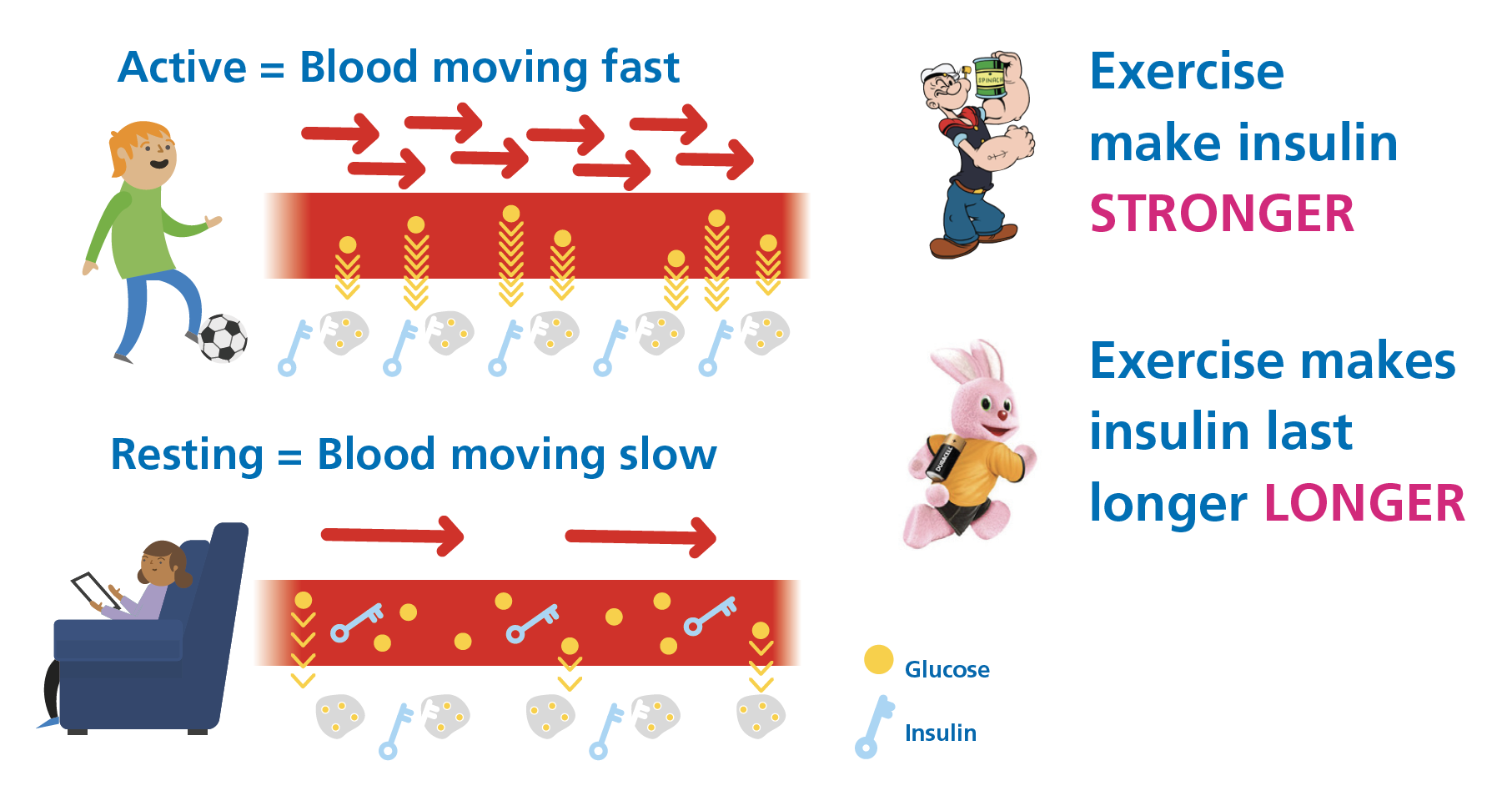
If eating within 90 minutes of exercise, the bolus insulin must be slashed. If not, the glucose will go hurtling down at a rate of knots.
Just look at the difference between NO reduction and 50% bolus reduction when exercise is done within 90 minutes of eating.
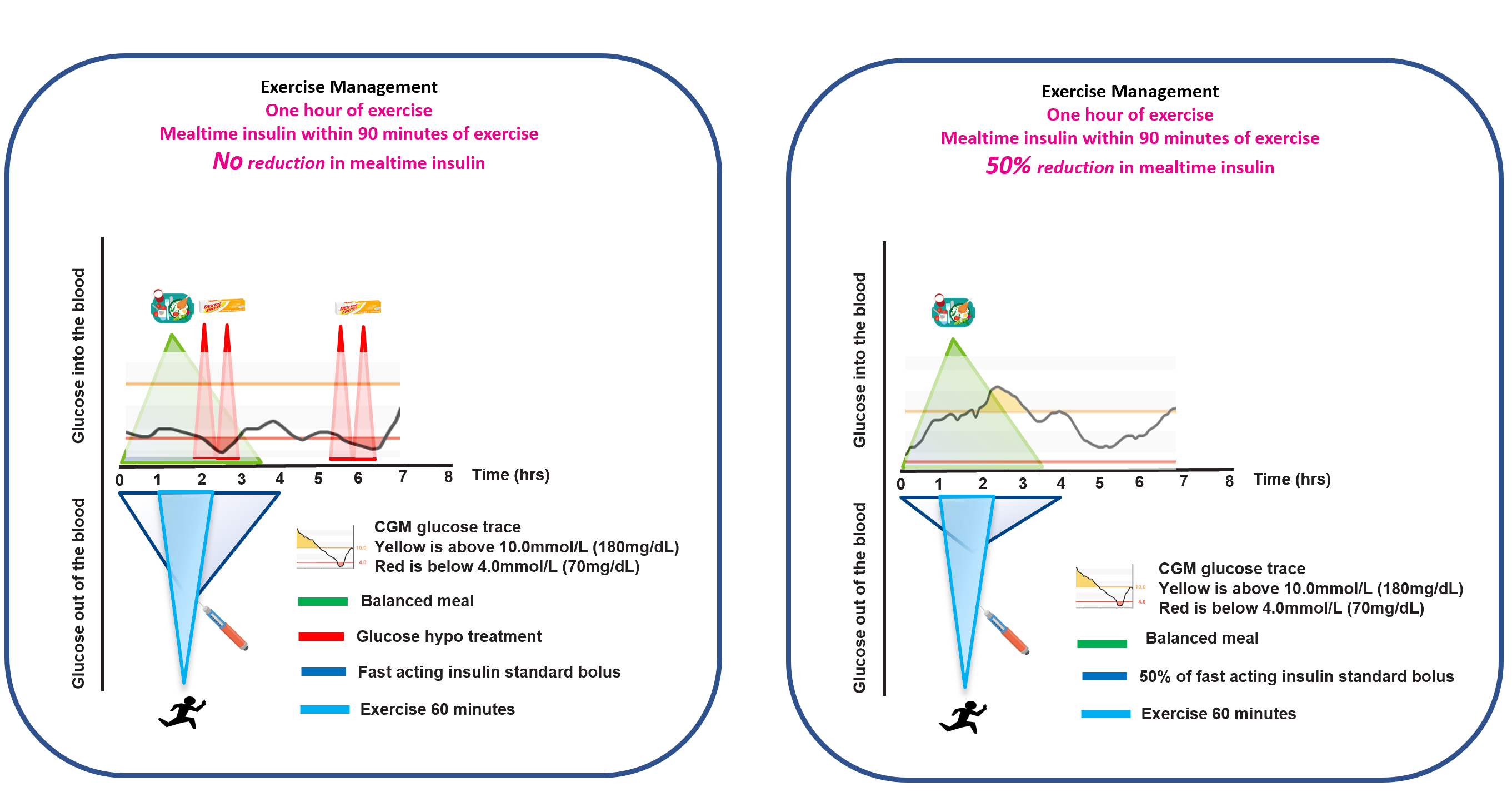
I have been caught out many times.
The worst was when I completed on the National Three Peaks Challenge on the 27th of April 2019.
The guide told us we would not be starting the challenge until after 09:00.
I ate my breakfast at 07:00 and gave a full bolus.
“It’s 08:00, you guys ready to start Ben Nevis?”
Obviously this guy had no clue about type 1 diabetes, even though I had told him I needed clear timings.
When climbing Ben Nevis I had to crunch through 30 dextrose tablets, 90g carbs! My stomach and teeth were not happy!
To make things worse, at lunch I asked,
“How long until we start Scafell Pike?”
“An hour” – the guide replied.
He was not going to get me this time. A 50% bolus reduction at 12:00.
You get guessed it.
We did not start until 14:10 and my glucose was climbing its own mountain. It did not come down until the end of Scafell Pike!
I took matters into my own hands and applied the Three-hour rule before Snowdon. I had my meal and bolus insulin more than three hours before we started.
I only needed two top-ups of glucose whilst running a temporary basal reduction of 50%. The three hour rule took the diabetes stress out of climbing Snowdon.
Here’s how the day looked.
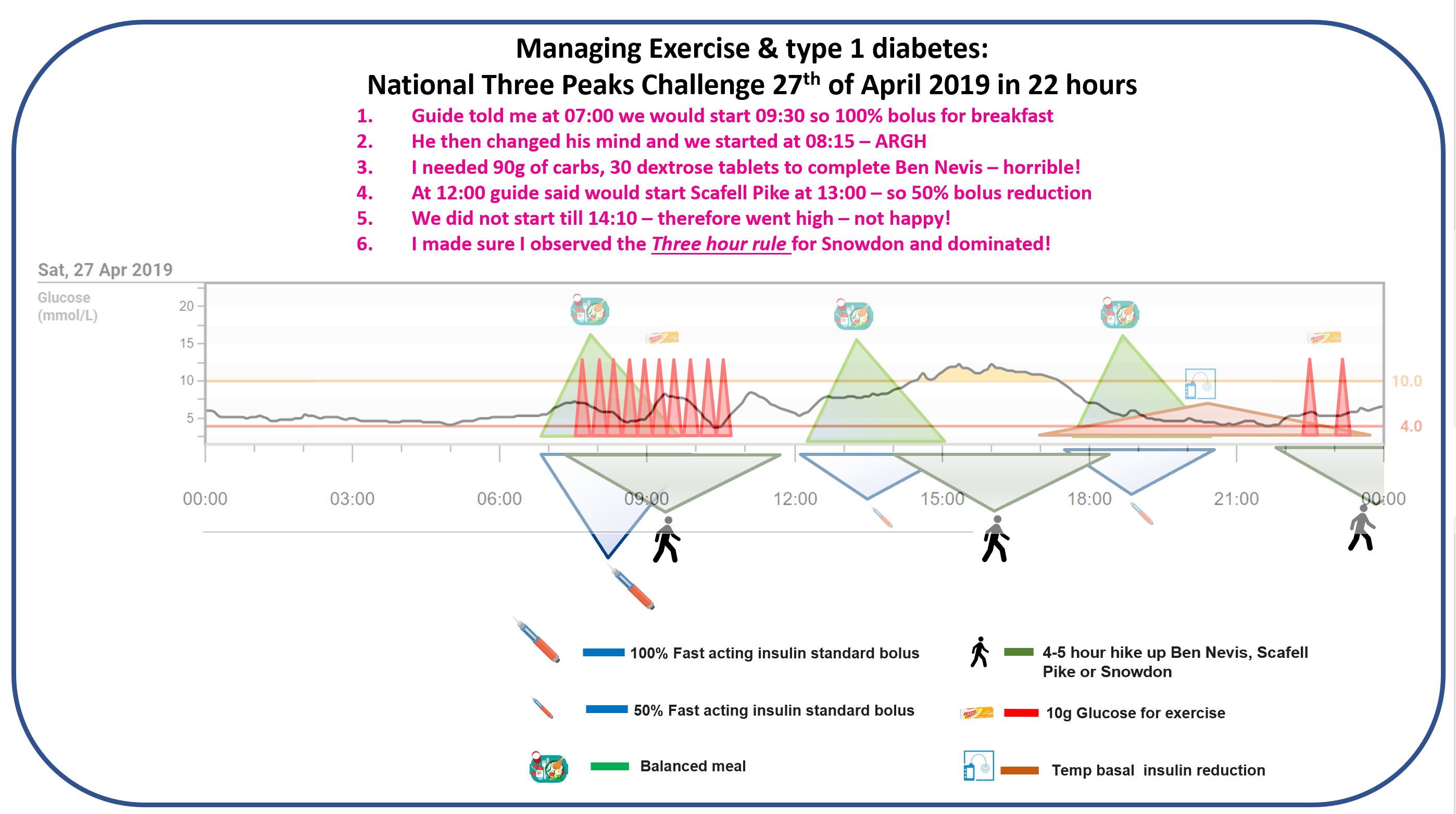

The National Three Peaks experience solidified the most important exercise and diabetes rule:
Three hour rule
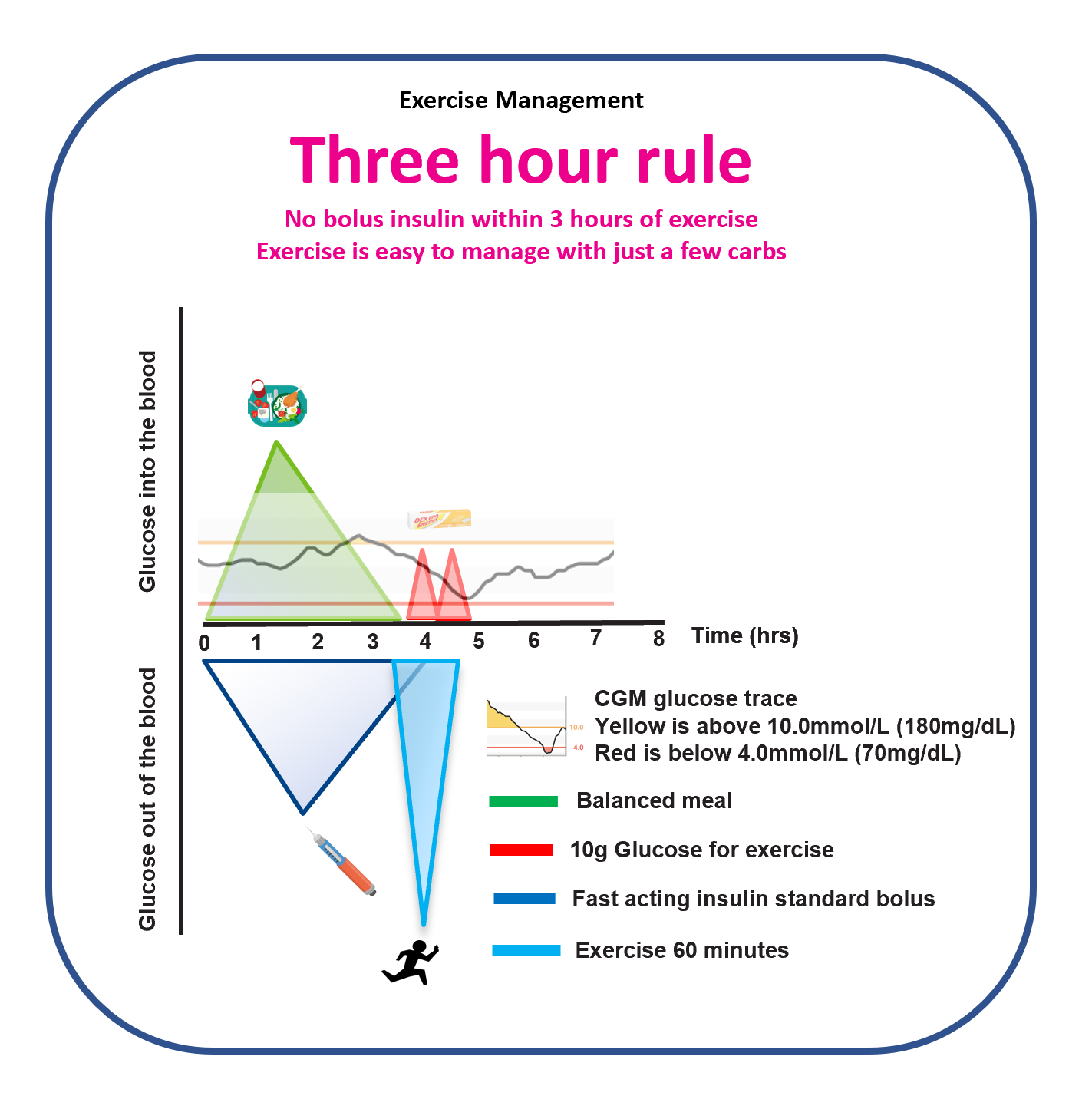
This graphic shows only a little top up of glucose is required when the last bolus of insulin was at least three hours before exercise. By doing this all other variables that can drop your glucose level are minimised.
Following the Three-hour rule has:
- Improved my exercise glucose control.
- Elevated my performance because all the carbs from the previous meal are stored in my muscles ready to be burned!
- Allowed me to concentrate on performance rather than worrying about highs or lows.
- Saved my teeth by not having to crunch through multiple packets of Dextrose!
Grace and Jude, keeping to the Three-hour rule will be more challenging in your early years.
Mummy and I will have to do bolus reductions when you are eating within 90 minutes of exercise However, we will plan to eat at least three hours before important sports so you can play at your best.
I have heard exercise increases your risk of going low overnight, is it true?
It certainly is.
This picture shows that when the exercise is at least 45 minutes the risk of going low is increased for up to 11 hours.
All the glucose used in the muscles and liver needs replacing. The side door to cells stays open and the insulin must be reduced to prevent hypos. I will tell you where to start in this guide.
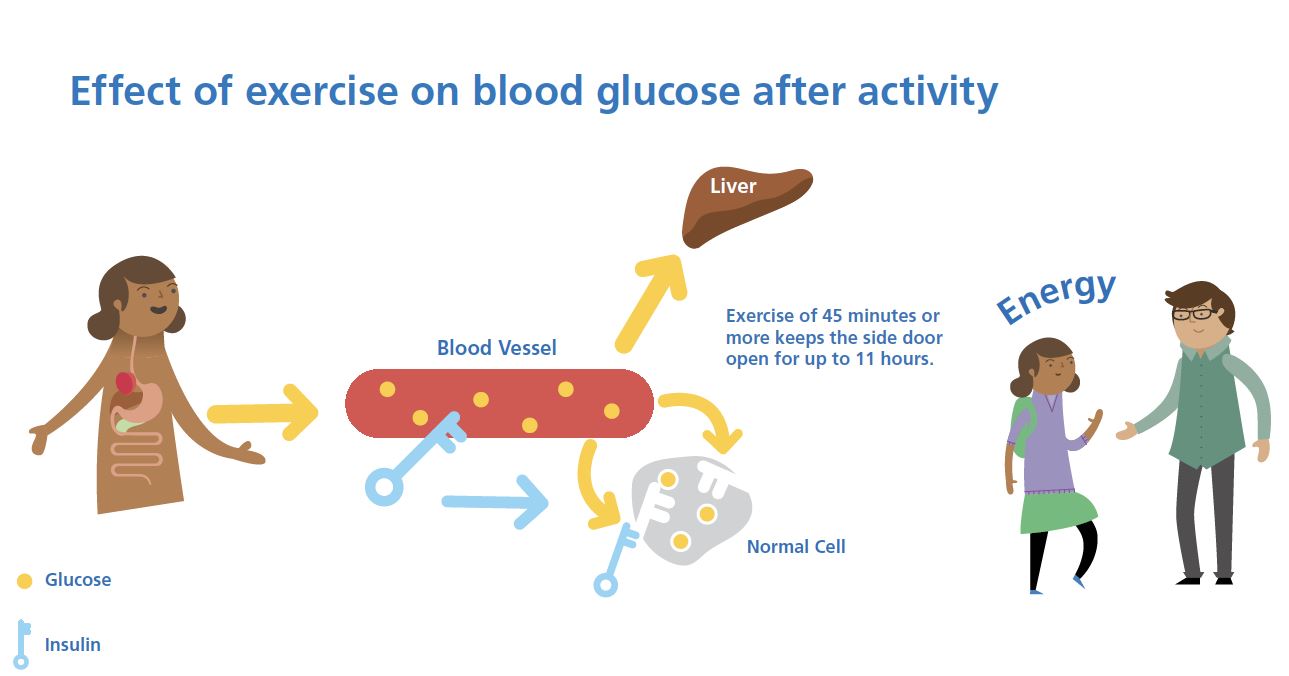
An extreme example of this is after I completed the Three Peaks National Challenge, over 70,000 steps.
My muscles and liver had been drained of their glucose stores. I think almost every side door on my muscles cells were wide open. I needed to reduce my mealtime bolus insulin by 50% for the next two meals, which were 100g of carbs each to refuel.
I also dropped my basal insulin by half for the next two days!!!
Obviously, exercise of an hour or so does not require these types of drastic reductions. However, they often need 25% reductions. I will teach you how to think about this in the guides.
What glucose level is safe during exercise and how many carbs do I need?
Grace and Jude, I have pulled the international guidance together into a PDF that allows you to personalise carb amounts and glucose targets depending on the CGM you are using.
Here is an example for Grace’s swimming.
Grace, you weigh 20kg, use a Dexcom G6 (mmol/L), and have a low hypoglycaemia risk. Therefore, I made this chart for you.
You need to click down to the second page to get the carb amounts. You will need to check 20 minutes before and every 20 minutes during exercise.
Graces-Exercise-CalculatorHere are the Exercise Carbohydrate Calculators to download for different CGM devices. You will need Adobe to be able to use them, which you can get for a Computer, Android device or Apple device.
Dexcom G6 – Exercise Carbohydrate Calculator
Libre 1 & 2 – Exercise Carbohydrate Calculator
Medtronic – Exercise Carbohydrate Calculator
Dexcom G6 with pump – Exercise Carbohydrate Calculator
The key features of the Exercise Carbohydrate Calculators include:
- The safest exercise glucose range is 7.0-10.0mmol/L (140-180mg/dL)
- It’s ok to start exercise in the 5.0-7.0mmol/L (90-140mg/dL) range but a few more carbs will be needed
- Check 20 minutes before exercise and every 20 minutes during to decide what action to take
- The maximum is usually 20g of glucose in 20 minutes, remember the intestine can usually only digest 1g per minute. However, when the glucose is rapidly falling during exercise it’s safer to increase closer to 1.5g per minute
- The weight is capped at 60kg so the number of carbs can never be above 30g in 20 minutes (1.5g/min)
- As weight goes up, so does the glucose required
- Change the glucose amount based on glucose value and trend arrow
Let’s pretend, John you are going to do a weights session. You weigh 100kg, use a T-Slim x2 with Dexcom G6 (mg/dL), and your hypo risk is low. You need to click down to the second page to get the carb amounts. You will need to check 20 minutes before and every 20 minutes during exercise.
John-Exercise-calc-exampleI have made exercise carbs charts for the different exercise types in 10kg increments in this guide, just in case, you cannot use the PDF’s.
Grace and Jude, this will mean you are covered as you get stronger.
Does it always have to be glucose?
Glucose is not the only option to supplement with during exercise, it’s just the best. Glucose is absorbed within 20 minutes and does not get trapped in the liver (unlike fructose). Therefore, when you check every the CGM every 20 minutes, you can be fairly confident there is not a backlog of glucose soon the be absorbed.
This is not the case If you decide to use sugar, fruit, biscuits or something similar. You run the risk of slow glucose absorption and going low before it kicks in, followed by glucose stacking up to catch you out later. I am sure it can be done, it just does not seem optimal.
Dani, regular teeth bruising and use of xylitol chewing gum will stop any dental issues.
How will I remember all this information?
For each activity type, I will walk you through an easy way to make starting plans for:
- Before exercise
- During exercise
- After exercise
By the end of this guide you will be able to create reasonable starting plans.
Remember, they will be a rough guides that need trial and error with continual tinkering.
The Glucose Never Lies, so let it be they guide.
Let’s get going.
Next step: Aerobic (Endurance) Exercise
Do you want to know when a new section of blog is added, click here.
